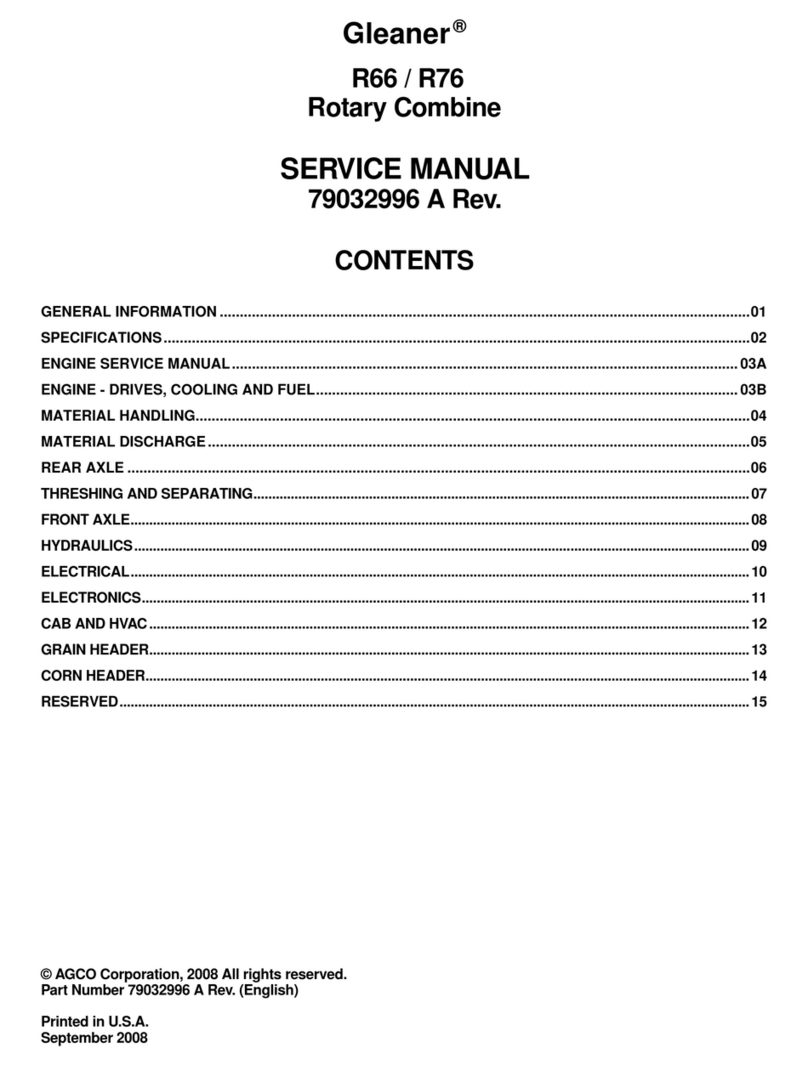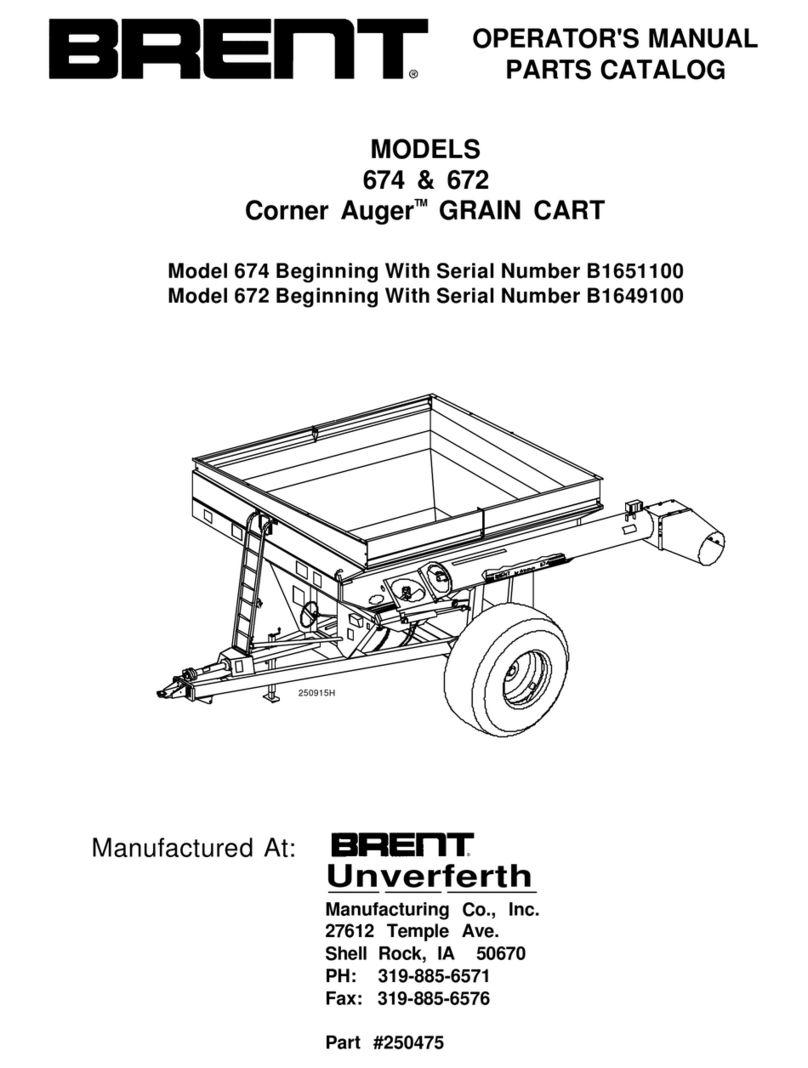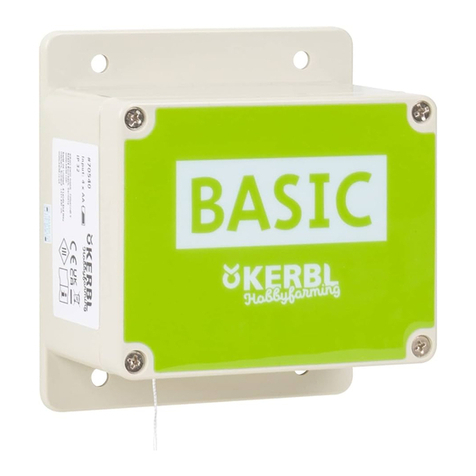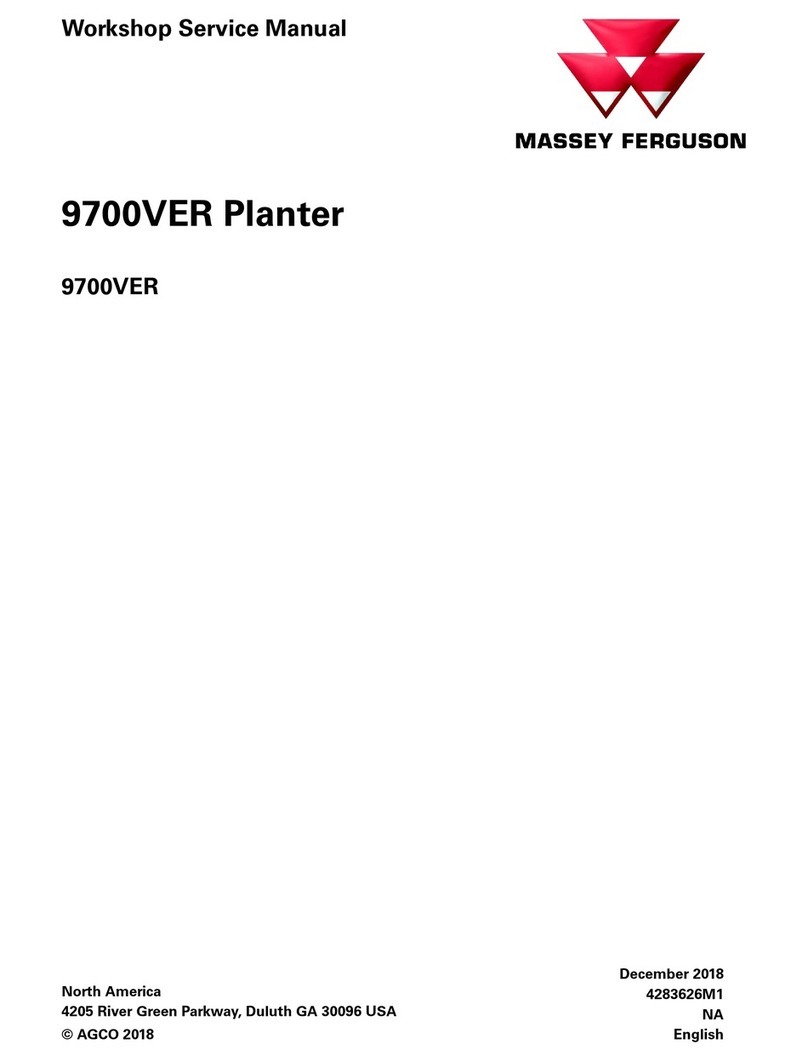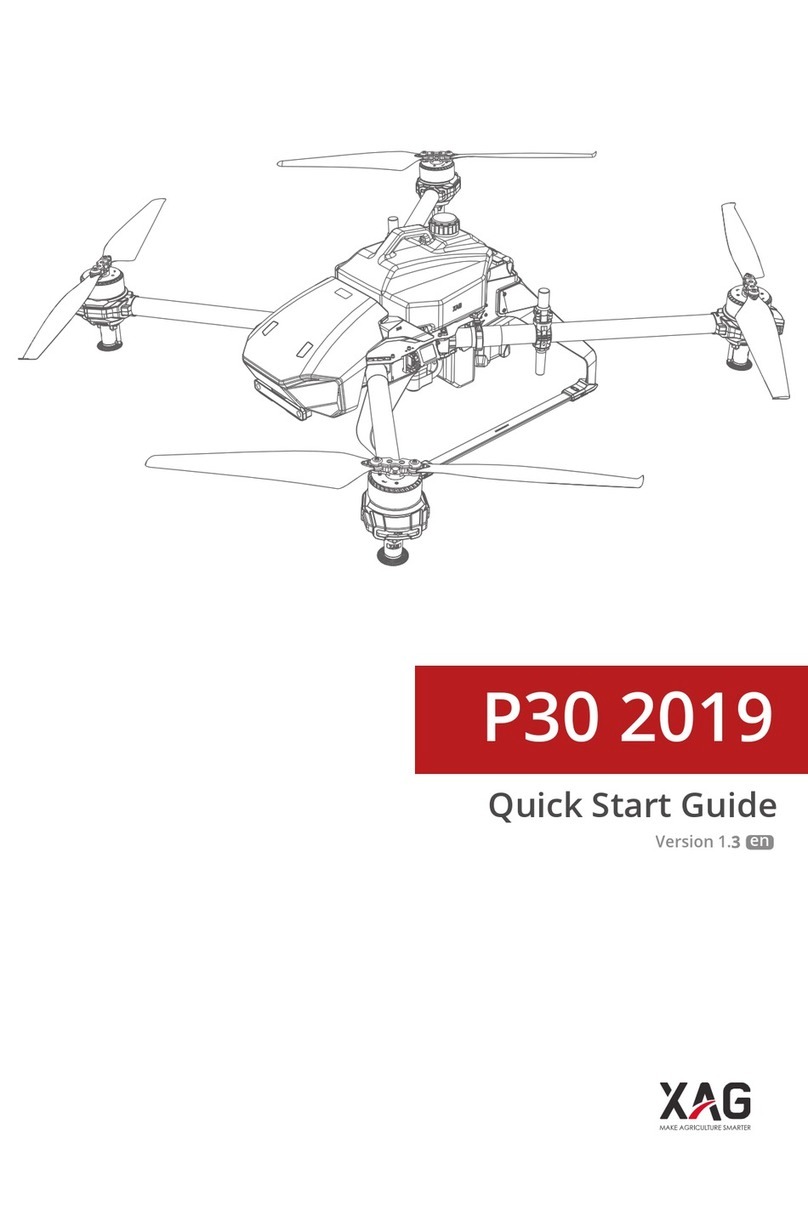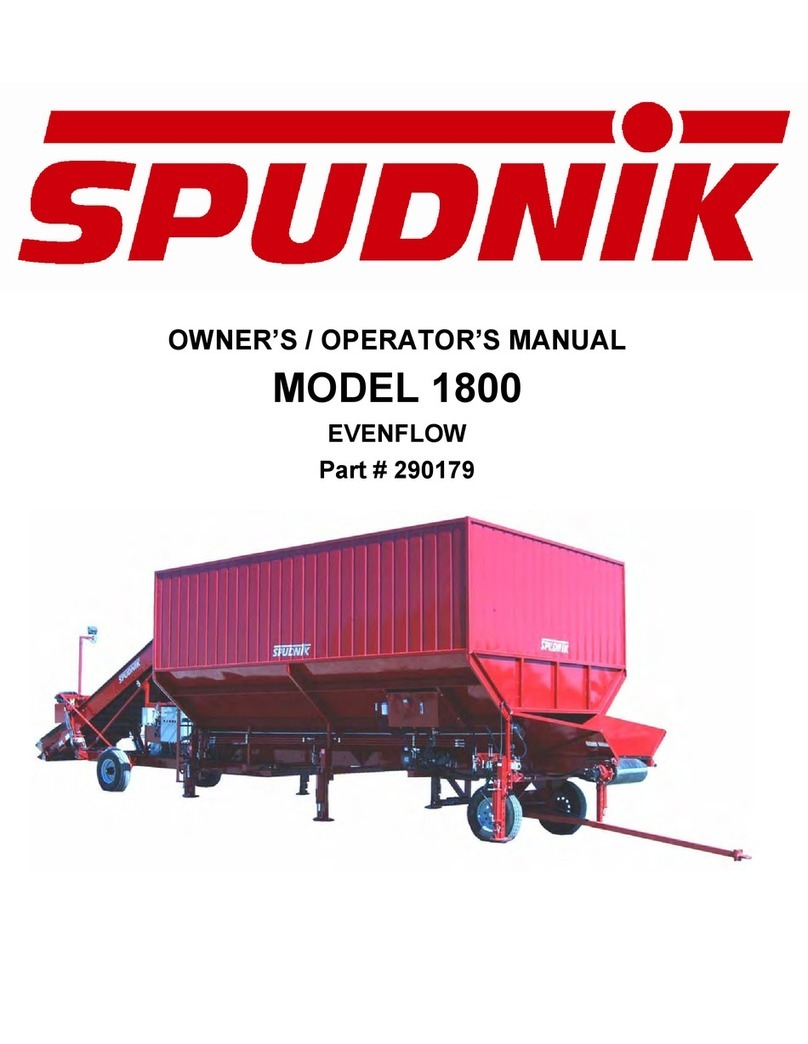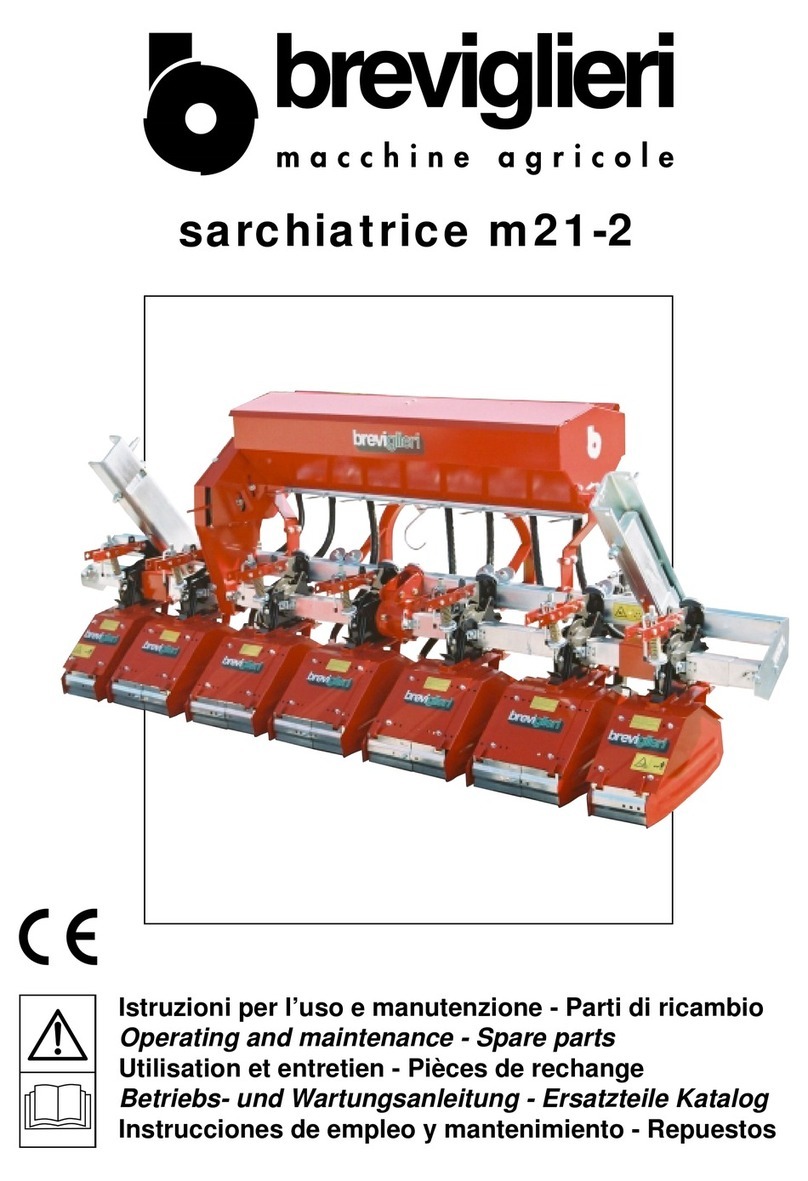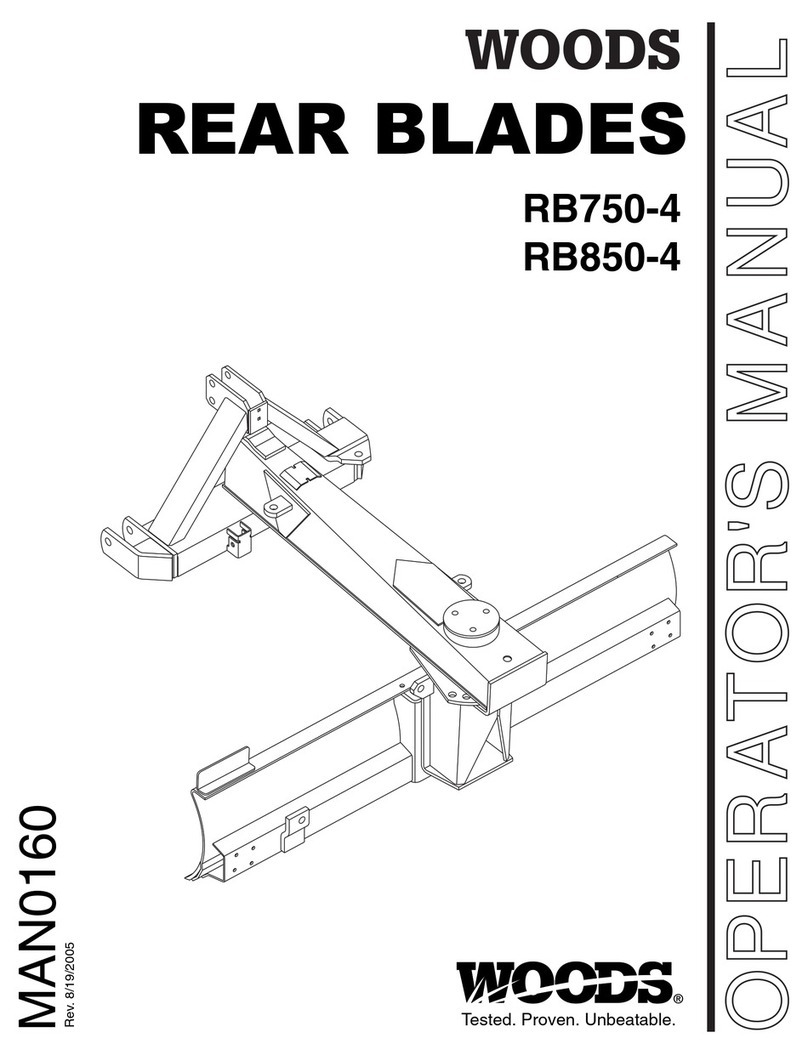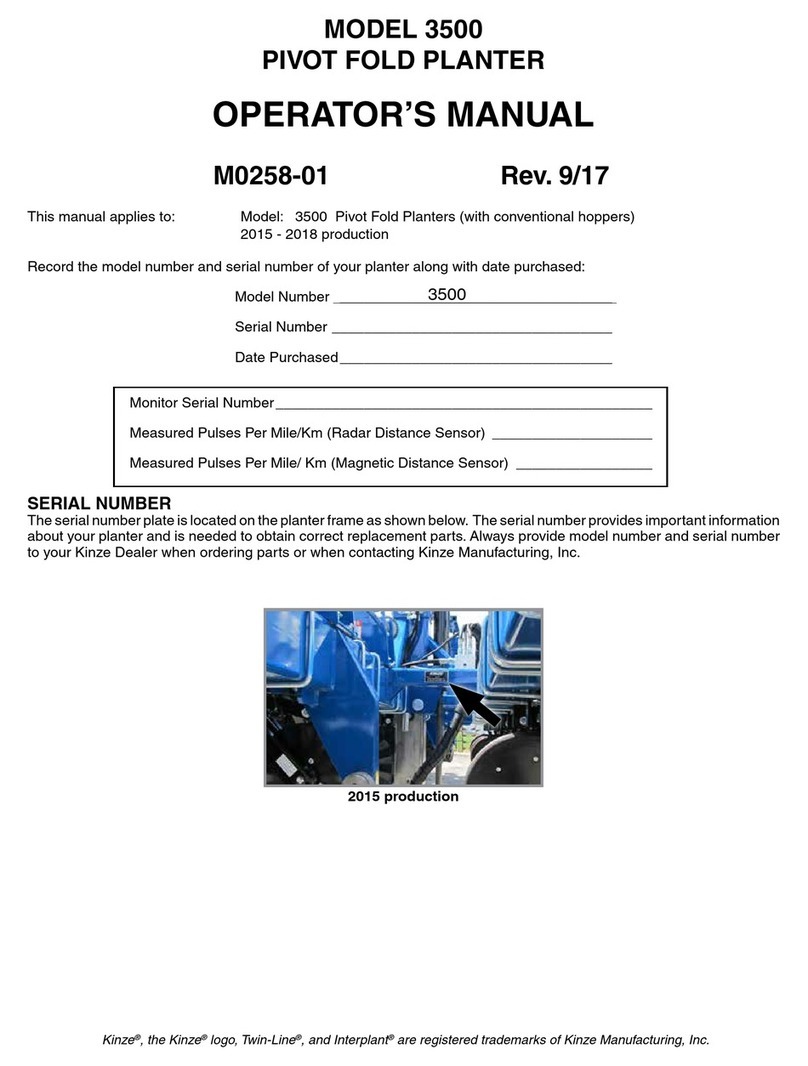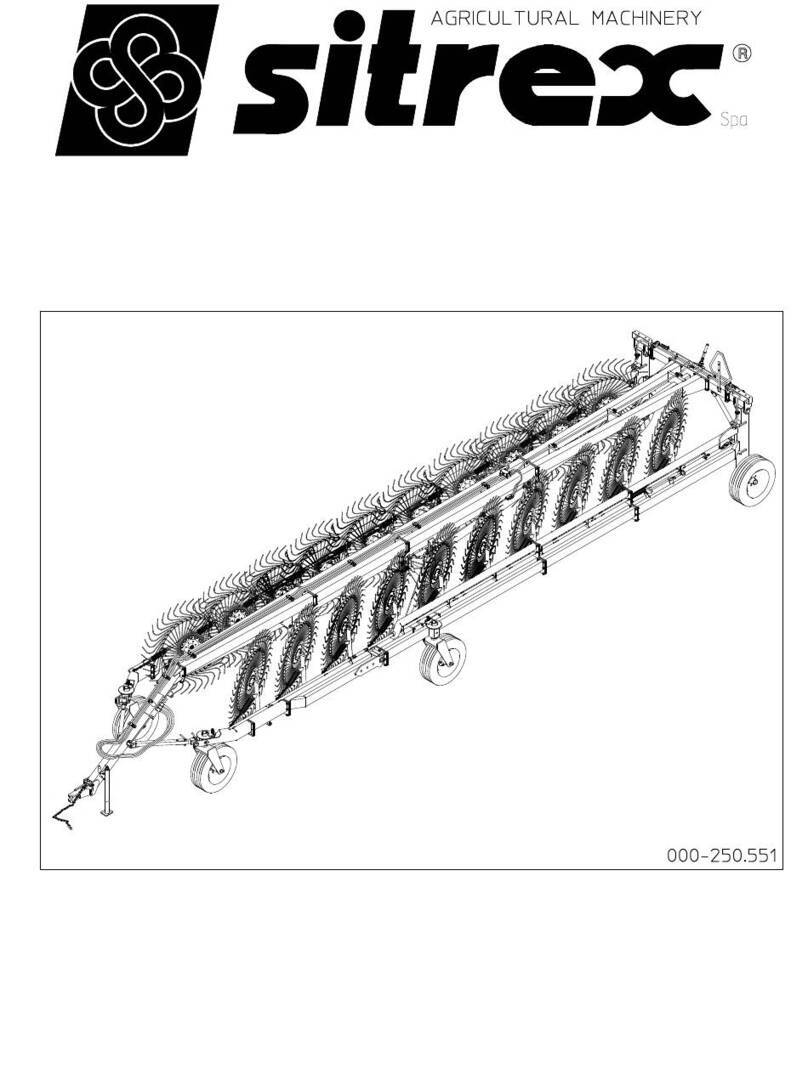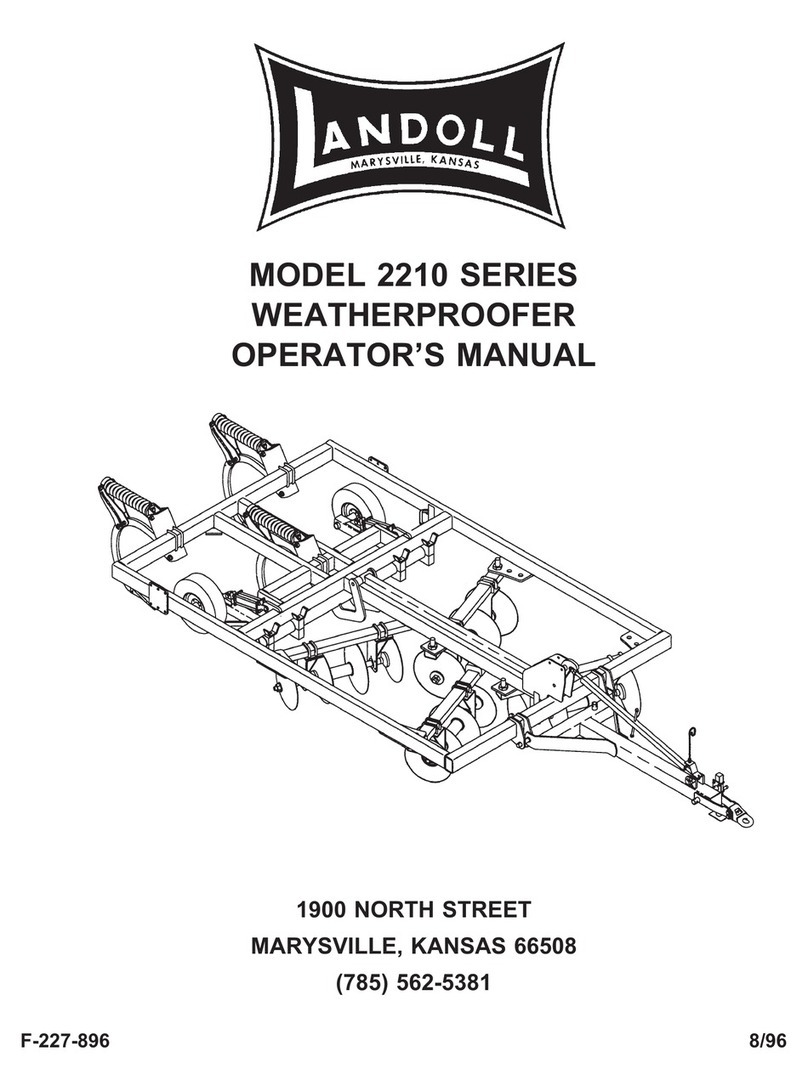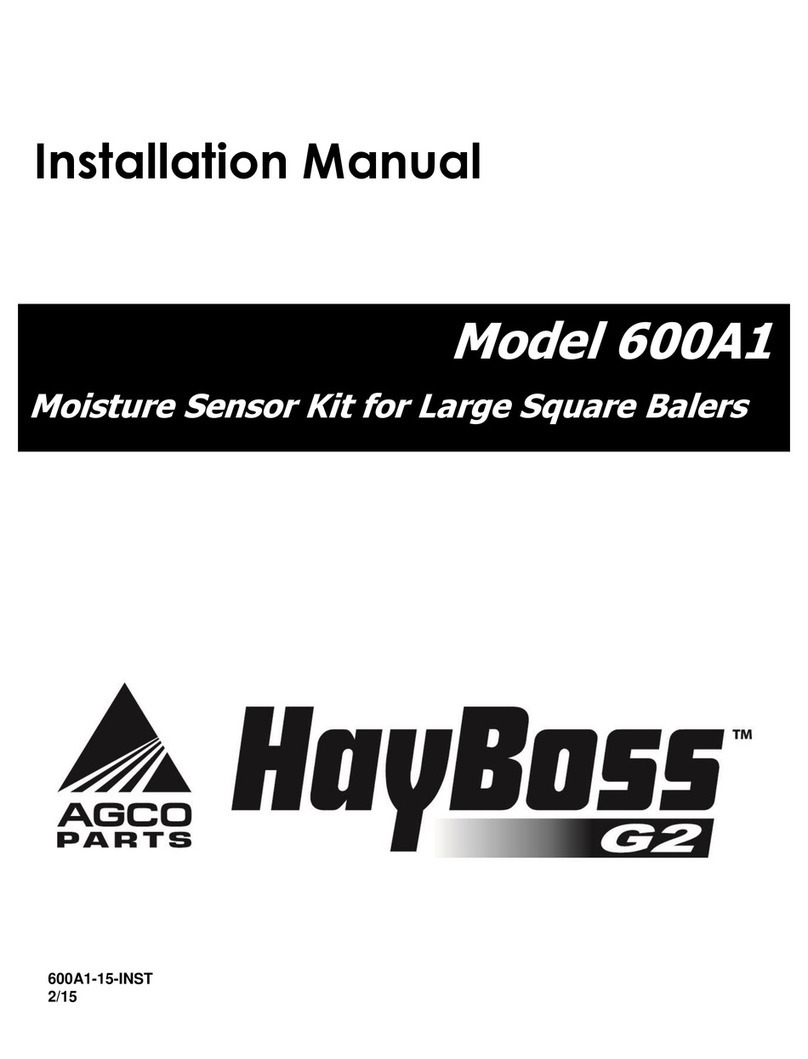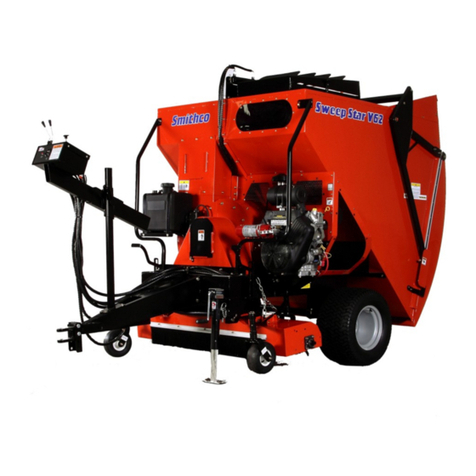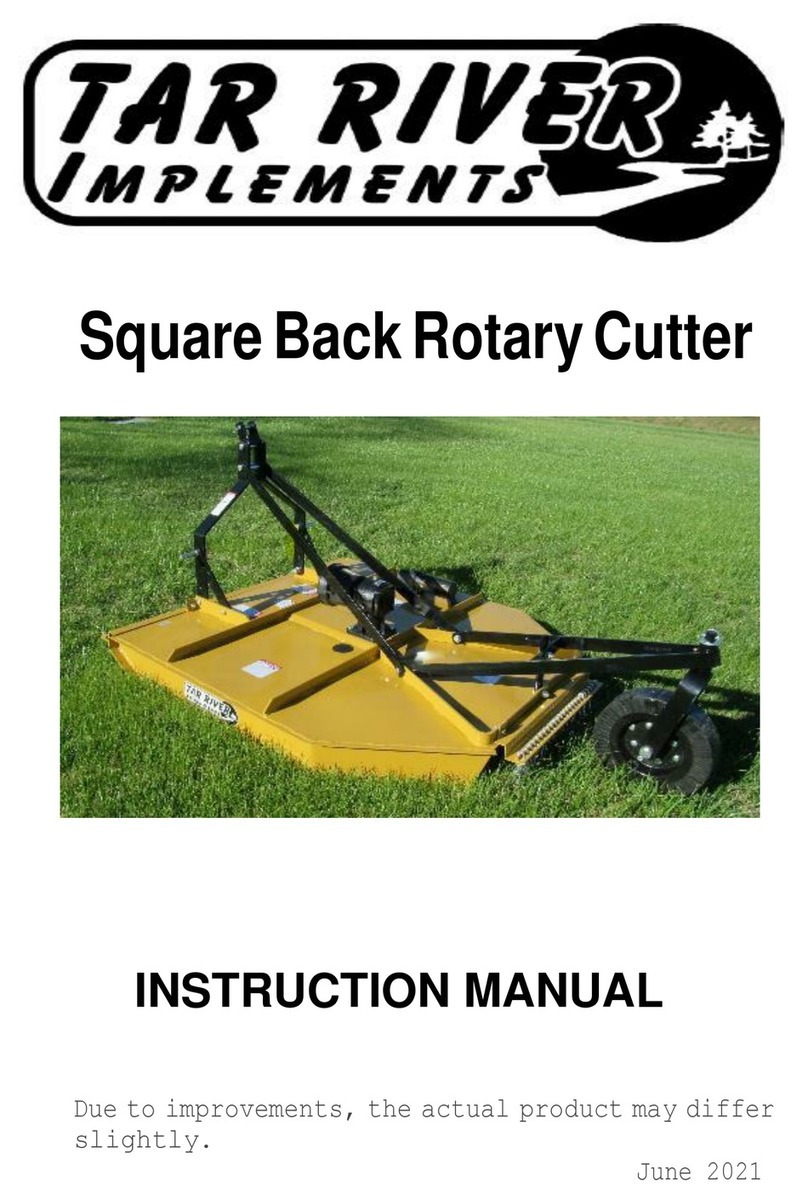GLEANER S67 User manual

2016 Quick Reference Guide
S67/S68/S96 • S77/S78/S97 • S88/S98 Models
It is YOUR responsibility to read and understand the safety section in your
Operator’s Manual and the manual for all attachments before operating your
machine. Remember YOU are the key to safety. Good safety practices not only
protect you, but also the people around you.
Study the features in your Operator’s Manual and make them a working part
of your safety program. Keep in mind that the safety section in your Operator’s
Manual is written only for this type of machine. Practice all other usual and
customary safe working precautions, and above all REMEMBER - SAFETY IS
YOUR RESPONSIBILITY. YOU CAN PREVENT SERIOUS INJURY OR DEATH.


Contents
Combine Setup 1
Cereal Grain - Wheat, Oats, Barley 1
Milo - Grain Sorghum 2
Dry Corn (< 20% moisture) 2
High Moisture Corn (> 24% moisture) 3
Soybeans 4
Canola/Rapeseed 5
Millet 5
Edible Beans 6
Sunowers 7
Flax 7
Grass Seed (Bluegrass, Bentgrass) 8
Alfalfa 9
Clover 10
Rye 10
Troubleshooting 11
Header 11
Feed conveyor 16
Processor 17
Grain quality 19
Grain loss 23
Loss Calculation 25
“Quick check” for combine grain loss 25
Spreading discharge 25
“Next step” for combine grain loss 25
Rotor loss 26
Shoe loss 26
“Advanced” grain loss calculation procedure 27
Advanced rotor loss 27
Advanced shoe loss 27
Standard Payable Moisture & Density Chart 28

Combine Setup
Cereal Grain - Wheat, Oats, Barley
Initial Combine Setup
Crop
Rotor RPM
Concave
Setting *
Fan Opening
Chaffer
Opening
Sieve
Opening
Chopper
Speed
Elevator
Boots
Wheat 750 0.1” -
0.2” 3 - 6 0.75”
(19 mm) 0.375”
(10 mm) Fast Solid
Oats 600 0.1” -
0.2” 3 - 6 0.75”
(19 mm) 0.375”
(10 mm) Fast Solid
Barley 400 -
600 0.1” -
0.2” 3 - 6 0.75”
(19 mm) 0.375”
(10 mm) Fast Solid
* - As read on the Tyton™terminal on the S9 Series or EIP on S8 and S7 Series.
Initial Header & Header Drive Setup
• Cutterbar locked up on ex headers.
• Variable speed header drive in slowest position.
• Right-hand pivot drive belt positioned on large countershaft drive
sheave.
• Left separator cage cover should be required for all cereal crops.
Straw Chopper
• Position chopper drive belt so chopper is operating at fast speed.
Tips
• Filler bars may be required for hard threshing cereals to eliminate
white caps. Order Concave Filler Kit #700958588 from your
dealer.
• If white caps persist, dealer should contact Technical Service Support
for additional kits required.
• A narrow wire-4 section concave option may be ordered from the
factory in lieu of the All Crop concave or from AGCO Parts for areas
predominately harvesting harder threshing cereals such as spring
wheat and canola. Order Narrow Wire Concave #71469348 from
your dealer.
1

Milo - Grain Sorghum
Initial Combine Setup
Rotor RPM
Concave
Setting
Fan
Opening
Chaffer
Opening
Sieve
Opening
Chopper
Speed
Elevator
Boots
450-600 0.2” - 0.4” 3 - 6 0.625”
(16 mm) 0.313”
(8 mm) Fast Solid
• Set concave to stem thickness just below head for starting point.
• Run in low range of rotor gearbox for greater torque if possible (S8
Series has greater range to provide ability to run on low side of
gearbox).
Initial Header & Header Drive Setup
• Lock up cutterbar on ex headers.
• Variable speed header drive in slowest position.
• Right-hand pivot drive belt positioned on large countershaft drive
sheave.
• Left separator cage cover should be required for all cereal crops.
Straw Chopper
• Position chopper drive belt so chopper is operating at fast speed.
Dry Corn (< 20% moisture)
Initial Combine Setup
Rotor
RPM
Concave
Setting
Fan
Opening
Chaffer
Opening
Sieve
Opening
Chopper
Speed
Elevator
Boots
250-300 0.6” - 0.8” 5 - 7 0.625”
(16 mm) 0.4”
(11 mm) Slow Solid
• Feed chains at slow speed for corn
Initial Header & Header Drive Setup
• Variable speed header drive hose and coupler should be connected.
• Right-hand pivot drive belt positioned on small countershaft drive
sheave.
Tips
• Use round end corn chaffer for higher moisture corn.
• A grain chaffer is optional, but corn chaffer is recommended.
• Removal of lower sieve will increase capacity in higher yielding corn.
2

High Moisture Corn (> 24% moisture)
Initial Combine Setup
Rotor RPM
Concave
Setting
Fan
Opening
Chaffer
Opening
Sieve
Opening
Chopper
Speed
Elevator
Boots
250-300 0.6” - 0.8” 5 - 7 0.625”
(16 mm) *
Remove
lower
sieve Slow Solid
• * IMPORTANT: Set chaffer to achieve acceptable grain bin sample.
Opening chaffer can be done anytime. However, due to the nature of
the electronics, closing the chaffer should be done at the end of the
eld after cleanout by completely opening and then closing to the
lower number that you desire and then adjusting up to the desired
chaffer setting.
• Feed chains at slow speed for corn.
Initial Header & Header Drive Setup
• Variable speed header drive hose and coupler should be connected.
• Right-hand pivot drive belt positioned on small countershaft drive
sheave.
Tips
• Use round end corn chaffer for higher moisture corn.
• Use grain chaffer for drier corn.
• Removal of lower sieve will increase capacity in higher yielding, high
moisture corn.
• In high moisture corn with wet green leaves, start at 350 RPM to
optimize performance and eliminate any chance for plugging of
processor with crop residue which could result in rotor loss. Increase
in 20 RPM increments up to a maximum of 400 RPM in these wet
green leaves for desired performance.
3

Soybeans
Initial Combine Setup
Rotor RPM
Concave
Setting
Fan
Opening
Chaffer
Opening
Sieve
Opening
Chopper
Speed
Elevator
Boots
400 0.2” - 0.4” 5 - 7 0.75”
(19 mm) 0.375”
(16 mm) Fast Perf.
Initial Header & Header Drive Setup
• Release and adjust cutterbar on ex headers. Adjust header height
control.
• Variable speed header drive in slowest position.
• Right-hand pivot drive belt positioned on large countershaft drive
sheave.
Tips
• Round-end corn chaffer can remain in combine for soybeans however,
if grain quality needs to be improved, standard chaffer is available.
• Left-hand separator cage cover and chopper oor cover are required
for soybeans.
• Retractable stationary knives should be left in the lower position in
soybeans. If additional chop of residue is required, the stationary
knives should be partially raised up in small increments to avoid
excessive power requirements. The new 24-knife chopper available
on S7 Series, standard on all S8 Series and S9 Series, will provide
adequate chop in most cases.
4

Canola/Rapeseed
Initial Combine Setup
Rotor RPM
Concave
Setting
Fan
Opening
Chaffer
Opening
Sieve
Opening
Chopper
Speed
Elevator
Boots
400-600 0.2” - 0.4” 3 - 5 0.75”
(19 mm) 0.375”
(9 mm) Fast Solid
Initial Header & Header Drive Setup
• Variable speed header drive (if equipped) in slowest position for draper
headers and direct cut headers.
• Right-hand pivot drive belt positioned on large countershaft drive
sheave.
• Feed chains (front and rear) should be in high position and fast speed.
• Angle pickup header down so pickup attachment and pickup header
auger can breakup clumps of crop material and more evenly feed the
feed chains. Lower wind board accordingly.
Tips
• During day in dry conditions, slow the rotor down; at night when
conditions are damp speed rotor up.
• For pickup headers, speed up variable-speed header drive (if
equipped) by 50%.
• Feeder house optimization instructions for R Series, S7 and S8 Series
are available at your Gleaner dealer to increase capacity in canola.
Millet
Initial Combine Setup
Rotor RPM
Concave
Setting
Fan
Opening
Chaffer
Opening
Sieve
Opening
Chopper
Speed
Elevator
Boots
525 0.2” - 0.3” 2 - 4 0.625”
(16 mm) 0.1875”
(5 mm) Fast Solid
• While you can harvest millet with the All Crop convave, settings
are ideal with Narrow wire concave installed. Order Narrow Wire
Concave #71469348 from you dealer.
5

Initial Header & Header Drive Setup
• Variable speed header drive (if equipped) in slowest position for draper
headers and direct cut headers.
• Right-hand pivot drive belt positioned on large countershaft drive
sheave.
• Feed chains (front and rear) should be in high position and fast speed.
• Angle pickup header down so pickup attachment and pickup header
auger can breakup clumps of crop material and more evenly feed the
feed chains and lower wind board accordingly.
Tips
• During day in dry conditions, slow the rotor down; at night when
conditions are damp speed rotor up.
Edible Beans
Initial Combine Setup
Rotor RPM
Concave
Setting
Fan
Opening
Chaffer
Opening
Sieve
Opening
Chopper
Speed
Elevator
Boots
190 - 230 0.3” - 0.4” 5 - 7 0.75”
(19 mm) 0.375”
(10 mm) Fast Solid
• Remove all reverse bars and replace with forward bars and remove
separator knives if installed.
Initial Header & Header Drive Setup
• Cutter Bar - In some crops, the material is direct cut so the header
should be set-up accordingly. In many cases, the crop is windrowed
and the material is harvested from the windrow.
• Variable speed header drive in slowest position.
• Right-hand pivot drive belt positioned on large countershaft drive
sheave and small driven pivot sheave.
Tips
• Optional perforated boot covers on clean grain and tailings elevators
may be used if desired but, can cause cracking in certain conditions.
• Optional slow speed elevator kit may be used if desired. Order Slow
Speed Elevator Kit #71394759 from your dealer.
Additional Combine Setup
• If cracking of beans still occurs, remove all lugs on front accelerator
roll and leave lugs on rear accelerator roll to move crop. Lugs should
be reinstalled immediately for all other crops.
6

Sunowers
Initial Combine Setup
Rotor
RPM
Concave
Setting
Fan
Opening
Chaffer
Opening
Sieve
Opening
Chopper
Speed
Elevator
Boots
350 0.4” 3 - 6 0.625”
(16 mm) 0.25”
(6 mm) Fast Solid
Initial Header & Header Drive Setup
• Header must be equipped with sunower attachment to minimize head
and seed loss at the header.
• Variable speed header drive in slowest position.
• Right hand pivot drive belt positioned on large countershaft drive
sheave.
Tips
• Unplug SmartCooling™hydraulic valve for sunowers.
Additional Combine Setup
• May require additional Separator Blanking Kit #700961967 (3
blanks) will block off separator grates and level out shoe distribution.
Please have your dealer contact Technical Service Support.
Flax
Initial Combine Setup
Rotor RPM
Concave
Setting
Fan
Opening
Chaffer
Opening
Sieve
Opening
Chopper
Speed
Elevator
Boots
800 0.0” - 0.4” 3 - 5 0.625”
(16 mm) 0.125”
(3.18 mm) Fast Solid
Initial Header & Header Drive Setup
• Flax is generally windrowed and a pickup attachment is used on
header.
• Variable speed header drive in slowest position.
• Right-hand pivot drive belt positioned on large countershaft drive
sheave and small driven pivot sheave.
7

Grass Seed (Bluegrass, Bentgrass)
Initial Combine Setup
Rotor RPM
Concave
Setting
Fan
Opening
Chaffer
Opening
Sieve
Opening
Chopper
Speed
Elevator
Boots
400 0.0” - 0.1” 0 - 1 ** 0.75”
(19 mm)* 0.1”
(2.5 mm) Fast* Solid
* - If baling straw is preferred, set chopper to low speed.
** - The Light Seed Kit #700959206 can be installed and used for grass
seed harvest but should be removed for any other crop.
Initial Header & Header Drive Setup
• Variable speed header drive in slowest position.
• Right hand pivot drive belt positioned on large countershaft drive
sheave.
Additional Combine Setup
• Completely block leaf screen door underneath combine with plastic
or cardboard. This will restrict incoming air to the shoe. Also block
vertical area on front side of frame x brace located in front of fan. This
will restrict incoming air to the shoe.
• May require additional Separator Blanking Kit #700961967. This
will block off separator grates and level out shoe distribution.
• If separator blanking kit is used, use the standard reverse bar
conguration on the rotor from the factory: (3) short reverse bars and
(1) long reverse bar.
• If baling straw, move chopper speed to small sheave to slow chopper
speed down and to reduce severe chopping of straw.
• If feeder chain plugging occurs move feeder chain speed to corn
speed.
• Have your dealer contact Technical Service Support for additional
adjustments required.
8

Alfalfa
Initial Combine Setup
Rotor RPM
Concave
Setting
Fan
Opening
Chaffer
Opening
Sieve
Opening
Chopper
Speed
Elevator
Boots
400 - 600 0.0” - 0.3” 3 - 6 **
0.25” -
0.925”
(6 mm -
16 mm)
0.1”
(2.5 mm) Fast* Solid
* - If baling straw is preferred, order impeller if needed.
** - The Light Seed Kit #700959206 can be installed and used for alfalfa
seed harvest but should be removed for any other crop.
Initial Header & Header Drive Setup
• Variable speed header drive in slowest position.
• Right hand pivot drive belt positioned on large countershaft drive
sheave
Tips
• If seed is light, refer to the combine settings for Grass Seed
(Bluegrass, Bent Grass).
Additional Combine Setup
• May require additional Separator Blanking Kit #700961967. This
will block off separator grates and level out shoe distribution. Please
have your dealer contact Technical Service Support.
9

Clover
Initial Combine Setup
Rotor RPM
Concave
Setting
Fan
Opening
Chaffer
Opening
Sieve
Opening
Chopper
Speed
Elevator
Boots
400 - 600 0.0” - 0.3” 2 - 6 **
0.25” -
0.925”
(6 mm -
16 mm)
0.1”
(2.5 mm) Fast* Solid
* - If baling straw is preferred, order impeller if needed.
** - The Light Seed Kit #700959206 can be installed and used for clover
seed harvest but should be removed for any other crop.
Initial Header & Header Drive Setup
• Variable speed header drive in slowest position.
• Right hand pivot drive belt positioned on large countershaft drive
sheave.
Additional Combine Setup
• May require additional Separator Blanking Kit #700961967. This
will block off separator grates and level out shoe distribution. Please
have your dealer contact Technical Service Support.
Rye
Initial Combine Setup
Rotor RPM
Concave
Setting
Fan
Opening
Chaffer
Opening
Sieve
Opening
Chopper
Speed
Elevator
Boots
700 0.2” 4 - 6 0.75”
(19 mm) 0.2”
(5 mm) Fast Solid
Initial Header & Header Drive Setup
• Variable speed header drive in slowest position.
• Right hand pivot drive belt positioned on large countershaft drive
sheave.
10

Troubleshooting
Header
Ragged and uneven cutting of crop
Possible Cause Correction
Cutting mechanism not operating at
recommended speed.
Check basic speed of combine and
check header drives.
Reel speed too slow for ground speed. Increase reel speed.
Reel height too high. Lower reel.
Reel position is either too far forward or
too far back on reel arms.
Adjust reel position so reel bats hold
grain leaning slightly into sickle.
Header not level. Level header.
Guards are bent or broken. Straighten or replace guards.
Upper lips of guards bent causing poor
shearing action.
Adjust upper lips of guards so they are
parallel to lower shear edge of guard.
Sickle not contacting guards. Adjust sickle so tips of sickle sections
rest lightly on guards.
Sickle hold down clips worn or not
adjusted properly.
Replace worn hold down clips and
adjust clips.
Too much fore and aft looseness
between sickle back and guards. Adjust wear plates.
Bent or twisted sickle. Straighten or replace sickle assembly.
Ground speed too fast. Reduce ground speed.
Flex cutter bar hanging up.
Check flex arms, filler panels (at ends
of headers) and stabilizers for freedom
of movement and correct any binding.
Flex header height sensor on rockshaft
not set the same.
Readjust sensor as outlined in header
Operator Manual.
Rockshaft binding (flex header) Free rockshaft.
Insufficient ground pressure from flex
cutter bar.
Increase ground pressure by
decreasing spring tension on flex arms.
Flex cutter bar tilted up too much at the
front.
Tilt cutter bar down so skid pads are
parallel to the ground.
Intermittent signal for automatic header
height control flex header.
Clean corrosion and paint from
contacts on switches. Check for good
connectiion at harness disconnects.
Check for broken wires in harness.
11

Header
Shattering of grain ahead of cutter bar
Possible Cause Correction
Reel speed not coordinated with
ground speed.
Change reel speed to coordinate with
ground speed.
Ground speed too fast for condition of
crop. Decrease ground speed.
Reel height too low. Raise reel.
Loss of grain heads and cut crop at cutter bar
Possible Cause Correction
Reel not low enough. Lower reel.
Conveyor clearance too high from
header bottom. Lower conveyor.
Conveyor fingers retracting too early. Adjust fingers close to header bottom.
Cutting with header too high, cutting
stalks too short for proper delivery. Lower header.
Reel speed too low. Increase speed of reel.
Reel incorrectly positioned on reel
arms. Position reel closer to header conveyor.
Conveyor flights worn. Replace conveyor flighting.
Guards plugging
Possible Cause Correction
Sickle sections not contacting guards. Adjust sickle so tips of sickle section
rest lightly on guards.
Missing or worn sickle sections. Replace sickle sections.
Reel not adjusted to provide smooth
flow of material into header conveyor.
Refer to Operator Manual for best
starting position and adjust reel
height, reel speed and reel fore and
aft position for even flow. Straighten or
replace guards.
Guards bent or broken. Straighten or replace guards.
Cutter bar tilted down too much. Tilt cutter bar up.
Bent or twisted sickle. Straighten or replace sickle assembly.
Ground speed too fast. Reduce ground speed.
Skid pads binding (flex header). Check that skid pad splice brackets are
not binding skid pads.
Flex cutter bar too heavy.
Decrease ground pressure by
increasing spring tension on flex arms
where plugging is occurring.
Flex header height too low. Move selection to higher cutting
position.
Dirt on skid pads (flex header). Clean dirt off skid pads.
12

Header
Crop bunching on cutter bar
Possible Cause Correction
Reel too high. Lower reel.
Reel too far forward. Set reel back.
Reel speed too slow. Increase reel speed.
Sticky header pan. Remove dirt, gum or rust.
Conveyor too high. Lower header conveyor.
Worn conveyor flighting. Replace flighting.
Conveyor fingers retracting too early. Adjust fingers as close to header
bottom as possible.
Conveyor not operating at
recommended speed.
Check header drive. Check basic
speed of combine and conveyor.
Excessive vibration of cutting parts
Possible Cause Correction
Cutting mechanism not at
recommended speed. Check basic speed of combine.
Excessive looseness of cutting parts
and sickle drive.
Remove all excessive play from cutter
bar and sickle drive to eliminate
vibration.
Drive idler shock absorber worn. Replace shock absorber.
Pickup reel tines entering sickle. Raise reel with fine height adjustment.
Drive tires improperly inflated. Inflate tires to recommended tire
pressure.
Header not secured to feeder house.
Check lower header hooks are secure
and spring latch is properly seated in
hooks.
Stabilizers loose at anchors (flex
header).
Tighten bolts holding the stabilizer
anchors to the header guard angle and
to the cutter bar assembly. Tighten
wobble box stabilizer attaching bolts.
Loose or broken cutter bar or flex arm
attaching bolts (flex header).
Tighten or replace all bolts attaching
cutter bar to header and flex arms.
13

Header
Reel wrapping in tangled and weedy crops
Possible Cause Correction
Incorrect location of pickup reel.
Place reel ahead and down. Make sure
reel tines clear the sickle with reel in
lowest position.
Reel speed too fast. Reduce speed of reel.
Pickup reel tines pitched too much to
rear. Adjust tine pitch.
Pickup reel tines bent. Replace or straighten tines.
Crop not divided at header ends. Install or adjust long dividers.
Reel ends wrapping.
Install reel end shields (Flex header).
Install Reel Divider Kit #700957021
(Dynaflex)
Raise reel to reduce amount of straw
gathered by reel.
Crop wrapping on header conveyor (Flex Header)
Possible Cause Correction
Conveyor too high or too low. Adjust conveyor height.
Uneven feed to conveyor. Adjust reel speed and/or location.
Conveyor finger retracting too early or
conveyor fingers too late Adjust position of conveyor fingers.
14

Header
Header conveyor plugging or material not moving from center
of conveyor into front feed chain (Flex Header)
Possible Cause Correction
Straw retarder clearance from conveyor
flight too great. Adjust straw retarder.
Reel not adjusted to provide smooth
flow of material into header conveyor.
Adjust reel height. Adjust reel speed
and flow of material into header
conveyor reel fore and aft position for
even flow.
Conveyor fingers retracting too early or
too late.
Adjust position of conveyor fingers for
best material flow.
Insufficient lean in header conveyor
flighting.
Conveyor flighting should have slight
lean toward center of conveyor.
Using carpenter’s square against
conveyor tube. Flighting should lean
approximately 0.5” (12.7 mm) toward
center of conveyor.
Straw retarder clearance from conveyor
flight too great. Adjust straw retarder closer to flight.
Conveyor too far forward or too far to
rear. Adjust conveyor fore and aft position.
Conveyor too high or too low. Adjust conveyor height.
Feeder chains not moving material. Move front feed chain drum forward
away from header consistently.
Crop wrapping on Dynaflex header center conveyor auger
Possible Cause Correction
Wrapping in damp, green-stem
soybeans. Install Auger Filler Kit.
15

Feed Conveyor
Feeder chains plugging or wrapping
Possible Cause Correction
Uneven feed from header.
Refer to previous section on HEADER or
CONVEYOR PLUGGING (PG. 15) condition
for header performance checks.
Improper feed chain speed.
Check feed chain drive sheave
installation with grain header belts
driving off larger sheave diameter. With
corn header, belts driving off smaller
sheave diameter.
Feeder chain drum stops set too low. Adjust feeder drum stops.
Dirt between front and rear feed chains. Clean out dirt.
Front feeder chain drive slip clutch set
too loose.
Check clutch assembly for worn or
broken parts.
Worn or damaged cylinder bars. Replace thresher cylinder bars.
Concave clearance too wide. Reduce concave clearance and then
speed if cracking occurs.
Feeder chain slats bowed or missing. Straighten or replace bent or missing
slats.
Material entering into the outer ends of
front chain slats.
Adjust straw retarders toward center of
header, then install fairing extensions.
Front feeder chains plugging in extreme conditions
Possible Cause Correction
Front feed chain grabbing crop, but not
releasing to the rear feed chain. Remove every other center slat.
Too much material entering combine
Possible Cause Correction
Cutting too low in order to get all down
and tangled crops.
Use lifting guards or pickup reel in
down and tangled conditions.
Uneven or bunched feeding of crop to cylinder
Possible Cause Correction
Uneven feed to cylinder. Refer to previous listed feeding
problems.
16

Processor
Slugging or overloading of cylinder
Possible Cause Correction
Engine not up to correct speed. Adjust engine high idle to proper
speed.
Cylinder drive belt slipping.
Check condition of belt and replace or
clean if it becomes worn or oily. Check
and lubricate gearbox input torque
sensor mechanism.
Too much material entering cylinder. Reduce ground travel speed.
Cylinder bars worn or damaged. Replace cylinder bars.
Concave twisted, worn excessively or
damaged. Repair concave.
Concave plugged with mud or dirt, etc. Clean concave.
Cage helical bars worn or damaged. Repair helical bars and be sure they are
properly aligned.
Cage door assembly not aligned.
Align door assembly by adjusting
alignment bolts to form a smooth inner
surface in the cage.
Cylinder discharge paddles worn or
damaged. Replace discharge paddles.
Discharge impeller or straw chopper
drives slipping.
Repair by checking and replacing worn
belts and damaged sheaves. Adjust
belt tensions.
Uneven feed to cylinder. Refer to section on UNEVEN OR BUNCHED
FEEDING (PG. 16).
Crop too damp or green. Wait for crop conditions to improve.
Crop extremely difficult to convey. Install edible bean kit across the cage.
(Such as edible beans and sunflowers).
17
This manual suits for next models
7
Table of contents
Other GLEANER Farm Equipment manuals
